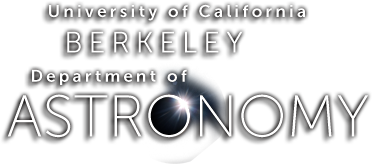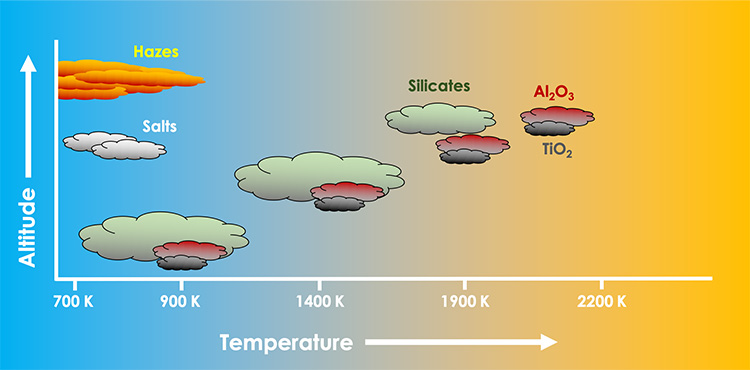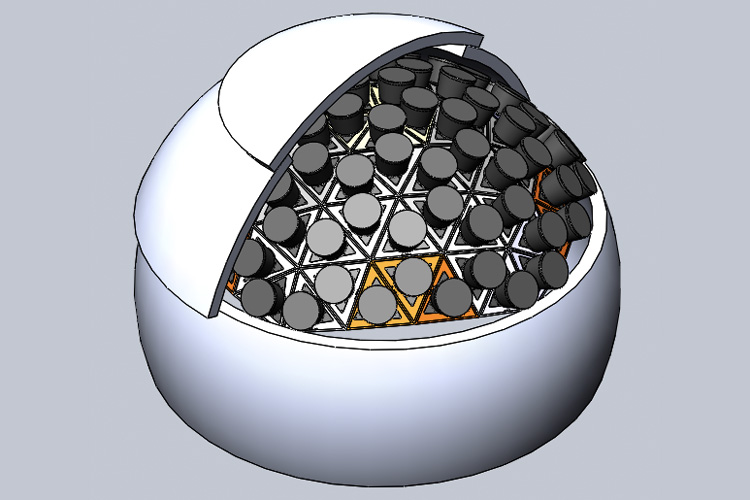-
Rogue’s gallery of dusty star systems reveals exoplanet nurseries
June 24, 2020
Astronomers this month released the largest collection of sharp, detailed images of debris disks around young stars, showcasing the great variety of shapes and sizes of stellar systems during their prime planet-forming years. Surprisingly, nearly all showed evidence of planets. “It is often easier to detect the dust-filled disk than the planets, so you detect the dust first and then you know to point your James Webb Space Telescope or your Nancy Grace Roman Space Telescope at those systems, cutting down the number of stars you have to sift through to find these planets in the first place,” said Tom…
More -
Astronomers create cloud atlas for hot, Jupiter-like exoplanets
May 26, 2020
A team of astronomers from the United States, Canada and the United Kingdom have now come up with a model that predicts which of the many types of proposed clouds, from sapphire to smoggy methane haze, to expect on hot Jupiters of different temperatures, up to thousands of degrees Kelvin. “The kinds of clouds that can exist in these hot atmospheres are things that we don’t really think of as clouds in the solar system,” said Peter Gao, a postdoctoral fellow at the University of California, Berkeley, who is first author of a paper describing the model that appeared May…
More -
Evening with the Stars – May 2020
May 26, 2020
How Do We Detect Life on Planets Orbiting Nearby Stars? Please enjoy this recorded presentation given on May 13th, 2020 by Professor Courtney Dressing and her research group by clicking on the image below.
More -
UC Berkeley team probes violent storms, lightning on Jupiter
May 14, 2020
Michael Wong is an astronomer, but he spends his days tracking storm systems and lightning flashes on Jupiter like some Earth-bound meteorologist looking for harbingers of bad weather. Wong is part of a team of researchers that includes Imke de Pater, a Berkeley professor of astronomy, Amy Simon of NASA’s Goddard Space Flight Center in Greenbelt, Maryland, and Andrew Stephens at Gemini Observatory. Together, they combine multiwavelength observations from Hubble and Gemini with close-up views from Juno’s orbit to gain new insights into turbulent weather on this distant world. Read More
More -
Professor Eliot Quataert Elected to the National Academy of Sciences
April 30, 2020
Professor of Astronomy and Department Chair Eliot Quataert has been elected to the National Academy of Sciences (NAS). Quataert is a theoretical astrophysicist who specializes in compact objects, galaxy formation and plasma astrophysics. Quataert is one of three new NAS members from UC Berkeley. Congratulations!
More -
Study challenges reports of low fatality rate for COVID-19
April 27, 2020
A group of researchers associated with UC Berkeley Astronomy, UC Berkeley Physics and the Lawrence Berkeley National Laboratory have performed a statistical analysis of COVID-19 mortality in Italy using Data Science methods. The group computed a higher mortality rate from the virus than has been reported by other analyses. Read the full news article here
More -
Professor Chung-Pei Ma Elected to the American Academy of Arts and Sciences
April 24, 2020
Professor Chung-Pei Ma, the Judy Chandler Webb Professor in the Physical Sciences in the departments of astronomy and physics, has been elected to the American Academy of Arts and Sciences (AAAS). Ma is a cosmologist and astrophysicist who studies dark matter and dark energy, the cosmic microwave background, gravitational lensing, galaxy formation and evolution, supermassive black holes and the large-scale structure of the universe. Ma is one of nine UC Berkeley faculty elected to the AAAS this year. Congratulations!
More -
New telescope to look for laser pulses from life around other planets
March 5, 2020
Are advanced civilizations in our galaxy trying to communicate with us by means of laser blasts? A team of University of California, San Diego, UC Berkeley, Harvard University and California Institute of Technology astronomers are building a pair of fly’s-eye observatories to find out. In early February, the scientists finished installing two prototype telescopes at Lick Observatory near San Jose, California, the first of hundreds of planned telescopes for a project called Panoramic SETI, or PANOSETI, for Pulsed All-sky Near-infrared Optical SETI. Eighty of these one-and-a-half-foot in diameter telescopes will be assembled into a geodesic dome, like the faceted eye…
More -
Berkeley student throws cold water on ‘monster’ black hole discovery
December 17, 2019
Sometimes, a blockbuster discovery is just too good to be true. UC Berkeley graduate student astronomer Kareem El-Badry knows that all too well — he just shot one down. El-Badry studies unusual binary star systems in which one of the two stars orbiting each other explodes as a supernova and turns into a black hole. But he was surprised when, on Nov. 27, the day before Thanksgiving, Chinese astronomers reported such a system with a black hole that was astoundingly large: 70 times the mass of our sun. Read More
More -
Courtney Dressing awarded 2019 Packard Fellowship
October 17, 2019
Courtney Dressing’s ongoing search for planets around other stars has won her a prestigious Packard Fellowship in Science and Engineering. Dressing is one of 22 early career scientists and engineers nationwide who will funding over five years to pursue their research. The new fellows were announced this week by the David and Lucile Packard Foundation.
More









